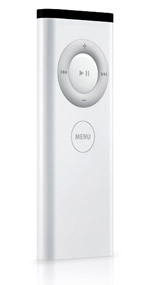Simplicity is Divine
Last Spring, I sat down with my business partner to create a simple process flow. In the beginning there was an input and an output. Being well versed in the art of structured problem solving (we’re both engineers); we cranked out enough formulas and theorems to put French mathematicians to shame. After all was said and done, we ended up with an encyclopedia of steps, options, and contingency plans. Now, you need to keep in mind that all we were thinking of doing was someone’s laundry. Yet what was once simple and pure had turned freakishly complicated and demonic. And instead of coming up with the ultimate process flow, we were left with a severe case of analysis paralysis.
I understand that operating a business isn’t easy, yet it shouldn’t be string theory either. This is where I came to realize that for every feature, service, and option we added, we increased the complexity of our operation exponentially. And to add insult to injury, none of these options merited any substantial increase in revenue.
So what is a business owner to do, I’ll tell you what a business owner is to do – simplify!
Case Study #1: Google Search
In 2005, Google owned around 59% of the search market, up 45% from only a year ago. The technology that powers Google search is so complex and unique that even the Department of Justice can’t get its hands on it. Yet one look at the homepage and you would think that the website was designed by a minimalist short on time. All you get is a spacious search bar and some search buttons. There are no banner ads asking if you can identify the latest Hollywood bean-pole, or news flashes about Brangelina. Instead you type in a search term and somehow Google searches through 8 billion web pages in a fraction of a second. It makes the invention of Velcro and the microwave look downright silly. And don’t think that the competition hasn’t taken note, just visit start.com and see for yourself (nice try MSN).
Case Study #2: The Apple Remote and iPod
 In a 2002 poll, the Consumer Electronics Association found that 87% of people considered ease of use to be the most important thing when it comes to new technology. It appears that Apple has made this their mantra. Take for example my current All-In-One remote. It has 40+ buttons with a cup holder and LCD screen just in case I want to write some assembly language to add a feature to it. Even with a Bachelor’s degree, it still took me a few tries to figure out how to record a television show in the beginning. The Apple Remote on the other hand has 6 buttons, one for every person who has accidentally browsed the Closet Entrepreneur. And with these six buttons you control everything from photos to DVD movies to MP3’s (or MP4’s if you actually buy your music). Now get this, the Apple remote actually has 4 more buttons than the iPod! And we all know how successful the iPod has been.
In a 2002 poll, the Consumer Electronics Association found that 87% of people considered ease of use to be the most important thing when it comes to new technology. It appears that Apple has made this their mantra. Take for example my current All-In-One remote. It has 40+ buttons with a cup holder and LCD screen just in case I want to write some assembly language to add a feature to it. Even with a Bachelor’s degree, it still took me a few tries to figure out how to record a television show in the beginning. The Apple Remote on the other hand has 6 buttons, one for every person who has accidentally browsed the Closet Entrepreneur. And with these six buttons you control everything from photos to DVD movies to MP3’s (or MP4’s if you actually buy your music). Now get this, the Apple remote actually has 4 more buttons than the iPod! And we all know how successful the iPod has been.
Case Study #3: Intuit’s Simple Start
Intuit’s Quicken has been targeting homes and businesses since 1983. Yet 21 short years later, there were still 9 million small-business owners who wouldn’t touch the software with a 10 foot pole. Maybe it was the bright Christmas themed packaging, or maybe it was the 125 setup screens. Either way, Intuit’s designers figured out a way to reduce the setup screens from 125 to 3 and reduce the major tasks from 20 to 6. The result, 100,000 units sold in 2004.
What has all this taught me? Well hopefully my future company can provide all its services at the touch of a single button or two. If that’s not a competitive advantage, I don’t know what is. 🙂
Sincerely,
The Closet Entrepreneur
» This entry was filed under Advice


Start The Conversation
Leave a Comment